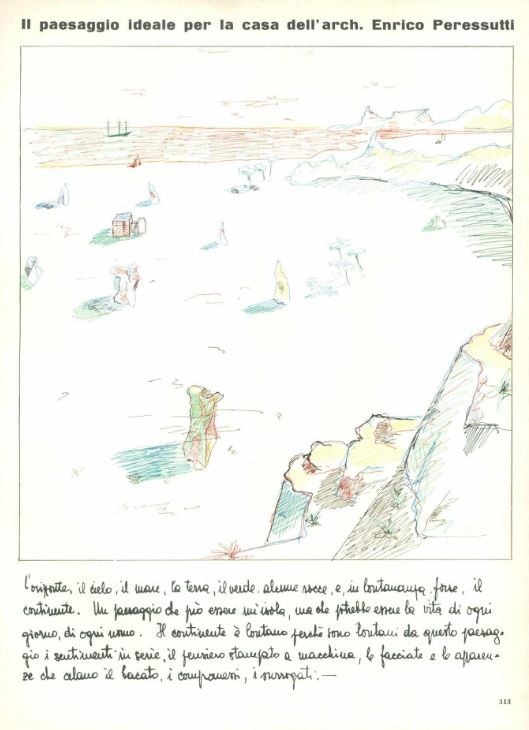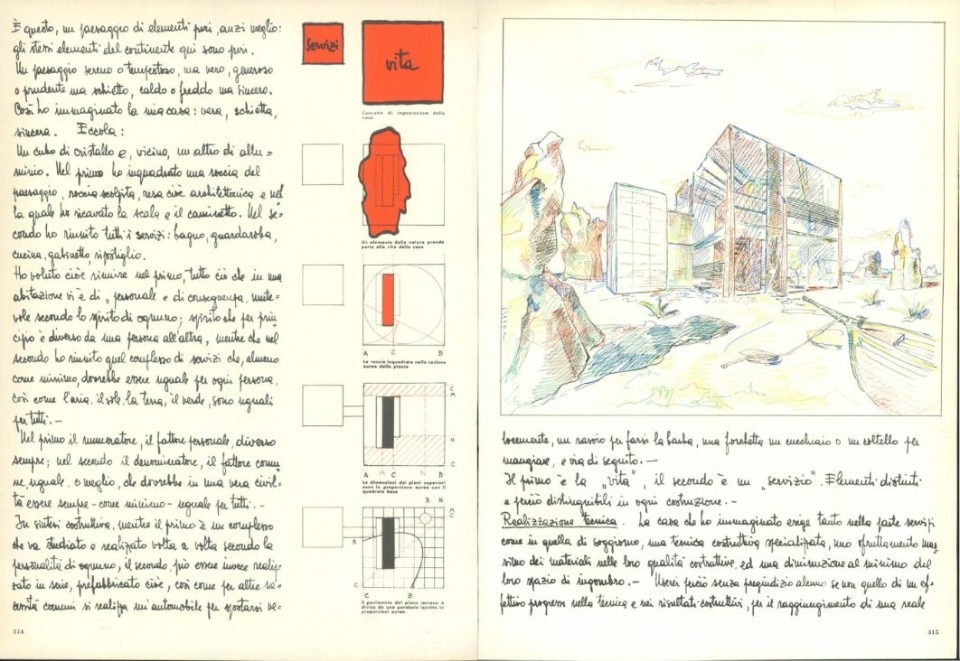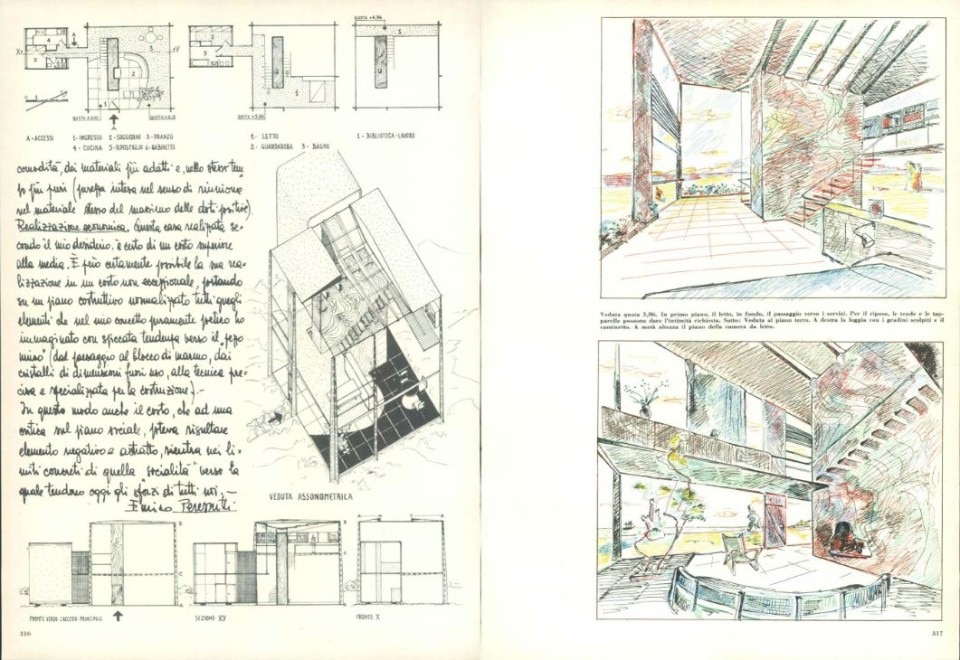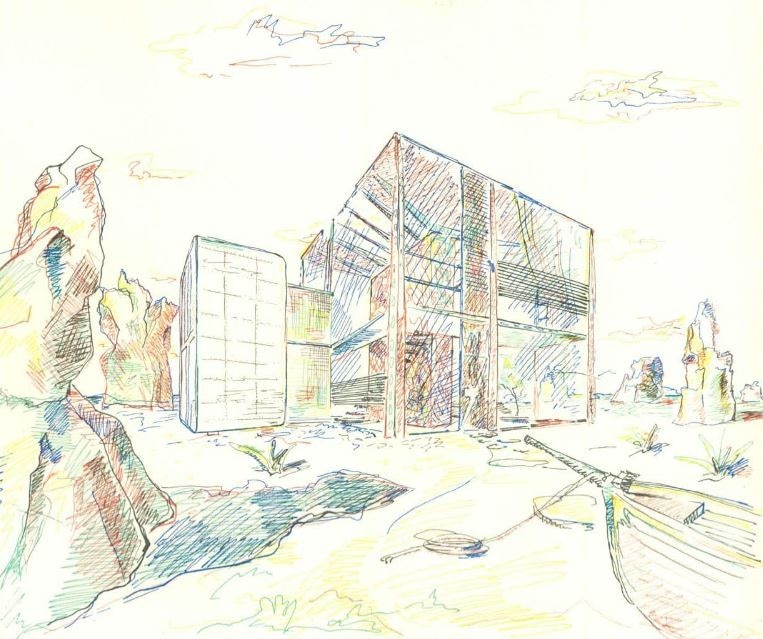When in 1942 Domus invited some of the most prominent names on the Italian architectural scene to think of an ideal house, a house for themselves, the answers came in various forms: they all had drawings, sketches and views, but each of them had some peculiarity. Carlo Mollino sent a letter, Gianluigi Banfi diagrams of a transportable house, Lodovico Belgiojoso views of a possible life in the mountains with his family. Cattaneo, Zanuso, and others would then follow. Enrico Peressutti, another founding partner of BBPR, an international reference for the most advanced development of modern thinking in Italy, would send a handwritten letter – which was directly published on Domus 176 in August 1942 – to represent the immediacy between the specificity of each individual in perceiving, and thus shaping the landscape around them, and the possible shapes that could result from it; a handwritten letter, then, to accompany a design that placed at its center an idea of inhabiting as the true core of human living.

The ideal landscape for the home of architect Enrico Peressutti
The horizon, the sky, the sea, the land, the green, some rocks, and, in the distance, perhaps, the mainland. A landscape that may be an island, but could be the everyday life of every man. The continent is far away because this landscape is far away from the mass-produced sentiments, the machine-printed thinking, the facades and appearances that conceal the bugs, the compromises, the surrogates.
This is a landscape of pure elements, or rather: the very elements of the continent here are pure. A landscape serene or stormy but true, generous or cautious but forthright, warm or cold but sincere. This is how I imagined my home: true, forthright, sincere.
Here it is: a crystal cube and, next to it, another one made of aluminum. In the first one I framed a rock from the landscape, a sculpted, architectural rock, in which I carved the staircase and the fireplace. In the second I gathered all the facilities: bathroom, checkroom, kitchen, toilet, storage room.

In the first volume I wanted to gather all that in a dwelling can be personal, and consequently changeable according to each person’s spirit; a spirit that in principle is different from one person to another; in the second, I brought together that complex of services that, at least as a minimum, should be equal for each person, just as the air, the sun, earth, greenery, are equal for everyone.
In the first one the numerator, the personal factor, always different; in the second the denominator, the common factor, equal, as it should always be for all in a true civilization.
In constructive synthesis, while the former is a complex that must be studied and realized time after time according to each person’s personality, the latter, on the other hand, can be made in series, prefabricated as it happens with other common needs: one makes a car for getting around quickly, a razor for shaving, a fork, spoon or knife for eating, and so on.
The former is “life” the latter is a “service”. Distinguishable elements in every construction.

Technical realization
The house I have envisioned demands as much in the services part as in the living room part, a specialized construction technique, a massive exploitation of materials in their constructive qualities, and a minimization of the footprint. I would therefore use without any prejudice an effective progress in technique and construction results, for the achievement of real comfort, of the most suitable and, at the same time purest materials (purity understood in the sense of gathering in the material itself the most positive qualities).
Economic realization
The cost of this house realized according to my desire is certainly of higher than average. However, it is certainly possible to realize it at an unexceptional cost by bringing to a normalized constructive level all those elements that in my purely empirical concept I imagined with the idea of “unique piece” in my mind (from the landscape to the marble block, from the out-of-scale glazing to the specialized technique for construction).
In this way even cost, which to a thorough critique in terms of mass production might have resulted in a negative or abstract element, stays within the current limits of that “seriality” toward which the efforts of us all are tending today.


